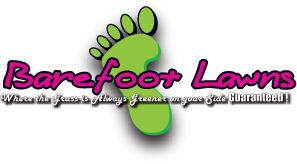Keeping Your Lawn Green and Healthy
A lush, vibrant lawn is the pride of any homeowner in Meridian and the greater Treasure Valley. During our hot, dry summers, an efficient sprinkler system is not a luxury—it’s a necessity. But what happens when it malfunctions? A broken or inefficient irrigation system can quickly lead to brown patches, wasted water, and surprisingly high utility bills. Recognizing the early signs of trouble is key to preventing minor issues from turning into major, costly repairs. This guide will help you identify common sprinkler problems and understand why a professional hand is often the best solution for a healthy, beautiful lawn.
Whether it’s a sputtering head or a mysterious wet spot, addressing sprinkler issues promptly ensures your landscape thrives. At Barefoot Lawns, we have over 30 years of combined experience keeping Treasure Valley lawns in top condition, and that includes expert sprinkler services.
Common Sprinkler Problems Meridian Homeowners Face
An irrigation system has many moving parts, and over time, wear and tear is inevitable. Here are some of the most frequent issues we see in the Boise and Meridian area:
Broken or Clogged Heads
Sprinkler heads are easily damaged by lawnmowers or foot traffic. Clogs from dirt and debris are also common, especially after winter. Signs include sputtering, uneven spray patterns, or heads that don’t pop up at all.
Low Water Pressure
If the water spray seems weak or doesn’t reach as far as it used to, you might have low pressure. This can be a sign of a hidden leak in the line, a partially closed valve, or a failing component that needs professional diagnosis.
Leaks and Puddles
Unexplained wet spots, pooling water around sprinkler heads, or persistently soggy areas in your yard point to a leak. These leaks waste a significant amount of water and can damage your lawn’s root system if left unaddressed.
Faulty Valves or Controller
A zone that won’t turn on or off, or a controller that has stopped working, indicates an electrical issue. This could be a malfunctioning solenoid, a bad valve, or wiring problems that require an expert to safely diagnose and repair.
DIY vs. Professional Sprinkler Repair
For the handy homeowner, tackling a simple clogged nozzle might seem straightforward. However, many sprinkler issues are more complex than they appear. What looks like a broken head could be a symptom of a larger pressure problem, and an incorrect repair can lead to more damage and higher costs down the line. Hiring a professional offers peace of mind and ensures the job is done right the first time. Professionals have the specialized tools and experience to accurately diagnose the root cause of the problem, from hidden underground leaks to complex electrical faults. They use high-quality parts and understand the intricacies of different system types, ensuring a lasting and efficient repair.
A professional can also optimize your entire system for better water conservation and lawn health, potentially saving you money on your water bill. For comprehensive lawn wellness, pairing your sprinkler repairs with services like aeration can dramatically improve your lawn’s ability to absorb water and nutrients.
The Importance of Seasonal Sprinkler Maintenance in the Treasure Valley
Idaho’s climate, with its freezing winters and dry summers, makes seasonal maintenance crucial for the longevity of your sprinkler system. Proper preparation and activation prevent costly damage and ensure your system is ready when you need it most.
- ✓ Fall Winterization (Blowouts): Before the first freeze, it is essential to have your system professionally blown out. This process uses an air compressor to remove all water from the pipes, preventing it from freezing, expanding, and causing pipes to burst. Skipping this step is one of the most common causes of major sprinkler damage in our area.
- ✓ Spring Start-Up: In the spring, it’s not as simple as just turning the water back on. A proper start-up involves slowly pressurizing the system to avoid water hammer, checking each zone, inspecting for leaks, cleaning filters, and adjusting heads for optimal coverage. This is the perfect time to identify and fix any issues that may have occurred over the winter.
Regular maintenance not only prevents repairs but also ensures your system runs efficiently, providing your lawn with the precise amount of water it needs without waste. This is a core part of a successful lawn care program.
Ready for a Hassle-Free, Healthy Lawn?
Don’t let sprinkler problems ruin your beautiful lawn. The experienced team at Barefoot Lawns is here to provide expert sprinkler repair and maintenance in Meridian, Boise, and across the Treasure Valley. Let us handle the complexities so you can enjoy a perfect lawn.
Frequently Asked Questions
How often should I have my sprinkler system checked?
We recommend a professional inspection at least twice a year: once for the spring start-up and again for the fall winterization. A mid-summer check can also be beneficial to adjust for peak heat and ensure optimal performance.
Why are some parts of my lawn brown while others are green?
This is a classic sign of uneven watering. It could be caused by clogged or misaligned sprinkler heads, low water pressure in one zone, or an incorrect sprinkler head type for that area. A professional adjustment can ensure uniform coverage.
Can a leaking sprinkler system really increase my water bill that much?
Yes, absolutely. Even a small, hidden underground leak can waste thousands of gallons of water over a season, leading to a significant and unpleasant surprise on your water bill. Prompt repair is crucial for water conservation and cost savings.
Is it necessary to blow out my sprinklers in Meridian?
Yes, it is essential. The Treasure Valley’s temperatures regularly drop well below freezing in winter. Failing to remove all the water from your pipes and components through a professional blowout will likely lead to freeze damage and expensive repairs in the spring.
